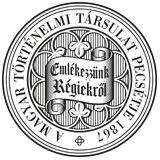Századok – 1995
Tanulmányok - Mesterházy Károly: A magyar fejedelem és kísérete a 10. században V/1033
1052 MESTERIIÁZY KÁROLY THE REIGNING PRINCES OF HUNGARY AND THEIR RETINUE IN THE 10th CENTURY by Károly Mesterházy (Summary) The settlement of the prince and the individual tribes of the Magyars in the Carpathian basin has been a much-debated element of the history of the Hungarian conquest. The written sources, primarily Anonymus, maintain that Prince Árpád settled down in the middle of the country, on the territory of present-day Budapest, and he was also buried there, near what was later called Fehéregyháza. The written sources do not speak of the settlement of the tribes. Archaeologists have long been seeking for the explanation of the fact that the richest graveyards of the period have been found in the Upper-Theiss region, i.e. in Bodrogköz, while around Budapest and in Transdanubia, i.e. at the places where Árpád's dynasty later had their estates, there are cemeteries belonging to the common people. Some historian dispute the authentity of Anonymus's data, while others try to prove it again and again. It was Béla Szőke who classified the finds according to social strata in 1959 and 1962. He called attention to the great masses of the common people. Nearly at the same time, in 1959 and in 1961, György Györffy and István Dienes emphasised the role of the armed retinue. From that time on, the cemeteries of the Upper-Theiss region came to be attributed to the middle strata and the members of the armed retinue of the prince. It remained, however, to be settled, why was this layer not conspicuous in the cemeteries around Budapest. Györffy thought the retinue consisted mainly of Kabars, so some archaeologists, with the present author among them, attributed the cemeteries of the Upper-Theiss region to this element. Others, like Fodor and Révész, dismissed this possibility. The author maintains that the Kabars belonged to the retinue of the prince. They lived in a compound territory in Bodrogköz, the southern part of Zemplén County and in Szabolcs. Their graves are full of richly decorated weapons and they often buried also their horses with the dead. Their clothes were also richly decorated and looked like those of the nobles. They buried their dead according to families. There are, however, only two generations in the graves, and from the mid-10th century they totally disappear. The graves of the really distinguished members of the tribes are, however, very simple. It is rather the richness of the graves of their wives that calls attention of the distinguished husbands near them. Sometimes we even find several graves of wealthy females from one village (like at Artánd, Koroncó and Algyő) without their husbands. This is what happens around Budapest, too. There is only one grave of a rich man and two graves of rich women, and a great number of graves belonging to warriors and servants. We conclude, therefore, that the seat of the prince was not where the rich graves have been found, i.e. in the Upper-Theiss region (see Révész). The Merovingian cemeteries might help us understand the situation. Nobility was hereditary there, so the nobles did not have to emphasise their status by burying the dead with rich grave furniture (see the writings of Kossack, Steuer and Burzler). The armed retinue, however, expressed their demand to rise into the ranks of the nobility also by their rich burials, and the retinue of the Hungarian princes must have behaved in a similar manner.
